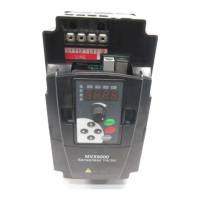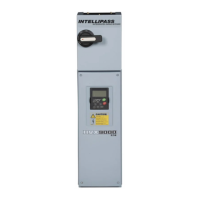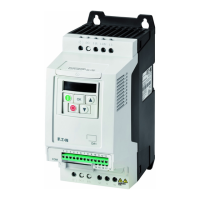Parameters
M-Max Series Adjustable Frequency Drive MN04020003E—October 2013 www.eaton.com 91
Protective Functions, continued
PNU ID
Access
RUN Value/Range Description
Factory Setting
(P1.3)
P8.4 709 X — Stall protection 1
The stall protection function is an overload protection.
It protects the motor from brief overloads (for example, blocked
motor shaft). The stall current is equal to the motor rated
operational current x 1.3, stall time is 15 seconds, and stall
frequency limit is 25 Hz. If the current is higher than the limit
and the frequency is less than 25 Hz, the drive will react as
defined by this parameter
Note: With long motor cable lengths and low motor power
(poor efficiency cos ), a higher (capacitive) motor current can
flow causing early tripping. Solution: Motor reactor or sinus filter
0 Deactivated
1 Alarm (AL 15)
2 Fault (F… 15), stop function according to P6.8
P8.5 713 X — Underload protection 0
The underload protection monitors the load of the connected
motor in the range of 5 Hz up to the maximum output
frequency. This requires that the output current of the
frequency inverter be monitored. A message will be generated
if the values set in P8.12 and P8.13 are undershot within
20 seconds
0 Deactivated
1 Alarm (AL 17)
2 Fault (F…17), stop function according to P6.8
P8.6 704 X — Motor, temperature protection 2
The motor temperature protection is designed to protect the
motor from overheating. It is based on a temperature algorithm
and uses the motor current (P7.1) to determine the motor load
(see figure on Page 92)
0 Deactivated
1 Alarm (AL 16)
2 Fault (F… 16), stop function according to P6.8
P8.7 705 X — Motor, ambient temperature 40
–20° to 100°C —
P8.8 706 X — Motor, cooling factor at zero frequency 40.0
0.0–150% The cooling factor of the motor with a zero frequency defines
the relationship to the cooling of the motor at the rated
frequency with the rated operational current without an external
fan (see figure on Page 92)
P8.9 707 X — Motor, thermal time constant 45
1–200 min The temperature time constant determines the time-span in
which the heat calculation model achieves 63% of its end value.
It depends on the design of the motor and is different from
manufacturer to manufacturer. The larger the motor design,
the greater the time constant

